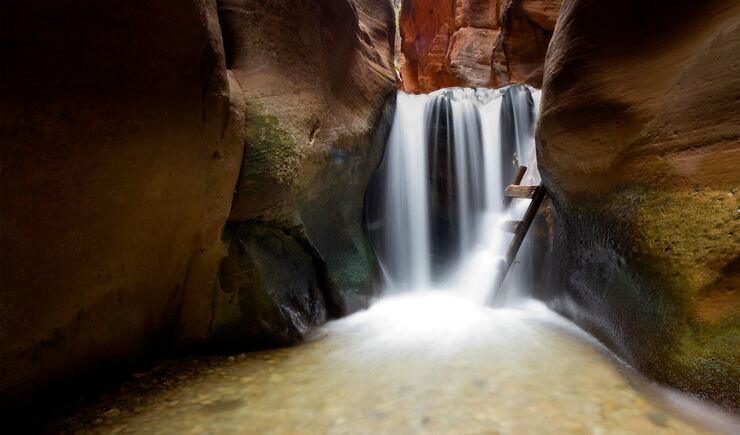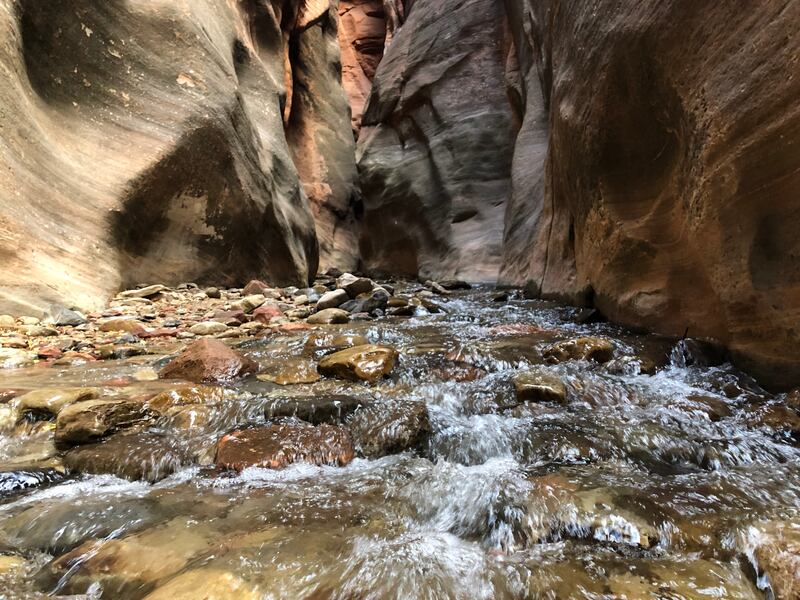When I was a kid, I played outside in the snow for hours and hours making snowmen, snow cones and snow angels. I loved to sled. I loved the feeling that the world was cushioned and comforting, and nothing could bring me back inside except one of two things: cold hands and cold feet.
Somehow, if my feet are cold, nothing on my body feels warm. My brain is hard-wired to alert me to the highest degree of impending danger if my feet get cold. I’m not talking about the kind of cold my feet feel when I get into bed first thing at night and put my toes between the sheets — although that happens too. My brain knows my feet are pretty safe, and will eventually warm up, when there are blankets and beds involved. I’m talking about the kind of cold you feel when you’ve been wearing the wrong boots in the snow, or you stood in one place for too long outside on a winter’s night, or you dipped your naked foot into freezing water, and safety is not guaranteed.
That’s the kind of cold that sends a message to my brain that says: “Warning, temperature breach in sector seven. Danger, toes may be lost. Seek help. This is not a drill. We are not OK.” And then I feel extremely vulnerable and concerned until I can fix the situation.
I’ve gotten rid of winter boots based solely whether they would keep my foot as warm as can be in unreasonably cold weather. I remember layering up three pairs of socks before I went to my high school’s annual Thanksgiving Day football game. I’m not the kind of gal who goes outside with open toed shoes after Labor Day, and I’ll be honest, socks in anything other than sneakers don’t look particularly cute, but I will ruin any outfit to wear shoes that accommodate socks if my toes are cold in the morning.
All of this is why, when I found myself wading through a river of ice-cold water recently, I thought momentarily that I might actually die.

It was a beautiful fall day, with the kind of bluebird blue sky that sets the colors of the turning leaves on fire. As I walked toward the river, I passed a towering tree of yellow that was so bright, it seemed as if it was lit from within. And then there were the orange leaves that were falling into the water and collecting in little swirling pools, like dancers. I turned one corner and could hardly believe my eyes there were so many bright red leaves hanging on the branches.
It actually took my breath away.
And then I walked down the bank, and dipped my toe into the stream that meandered across my hiking path for the next two miles, requiring me to step into it. Gosh, that was cold.
But, I have dipped my feet in cold water before, and sometimes it can feel refreshing, so I pushed on deeper.
We crossed the stream again, and it wasn’t so bad.
We crossed it a third time, and I was doing fine.
By the time we crossed the stream the fourth time, I noticed the feet of the people coming out of the canyon. They were all soaked, and red, and looking very cold.
From there, I felt like I switched into survival mode. It wasn’t just my own toes I was worried about, either. As I watched my children step into the water again and again, I became worried about their little feet, too. Here we were in sandals, just getting colder and colder and colder.

By the time we reached a turn in the trail and entered the stream fully to follow a slot canyon to the end, I was having serious doubts about my ability to complete this hike. It was beautiful, but it was painful.
My feet felt like they were on fire. And then they felt like they should have felt like they were on fire, but they were so cold and frozen, all I felt was a deep ache, and numbness. I worried about the accuracy of my steps as I shuffled through the water.
It was hard, but I found one thing that helped.
Along the path were rocks that jutted out of the water. Some were big and some were fairly small. They were few and far between, but I found if I could just look for those little islands of safety, those random rocks, I could occasionally jump onto them and get a brief break from the bite of the water. I jumped from rock to rock to rock until I was finally back on dry land.
Those rocks made me think about life. Sometimes, in hard and hurtful situations, you have to look for an inch of respite among the icy depths, and take a leap. With enough rocks, and enough leaps, eventually, I made it through to the end.
I wondered if my feet would ever feel warm again, but as soon as I saw my bed that night, I knew I would be fine.
I may hate to have cold feet, and maybe the world isn’t as cushioned and comforting as I remembered, but pedestal by pedestal, I’m staying outside.


Amy Choate-Nielsen writes a bi-monthly column on her family experiences and lessons learned from her grandmother, Fleeta, who died before she was born.




